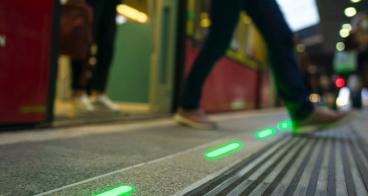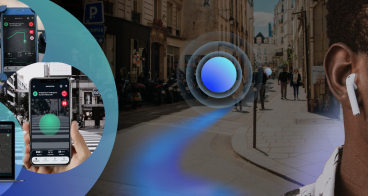Tampere’s path to a human-centric walkable city
Tampere, a city in Finland, is reimagining the future of urban living by integrating advanced technologies into its city planning. The city’s ambitious vision revolves around creating a more inclusive, sustainable, and human-centric environment where citizens' well-being, equality, and sustainability are prioritised.
This vision is being brought to life through WeGenerate, a European project dedicated to citizen-driven urban regeneration. By harnessing digital twins, AI, and immersive virtual environments, WeGenerate empowers cities to actively co-create sustainable neighbourhoods with its citizens. At the heart of this approach lies the concept of the Metaverse, which Tampere aims to leverage as a tool for rethinking how cities are designed, governed, and experienced.
But what exactly does this mean in practice, and how will Tampere’s initiatives contribute to a more walkable and resilient urban future?
What Is the Metaverse, and how does it relate to Tampere's vision?
The Metaverse, as a collective virtual shared space, blends physical reality with immersive digital experiences like augmented reality (AR) and virtual reality (VR). Tampere’s vision extends beyond the conventional Metaverse, embracing a more specialised concept called the “Citiverse,” which focuses on transforming urban environments into interconnected, resilient, and sustainable hubs through machine learning, digital twins, and other advanced technologies. This vision intends to integrate these technologies with urban governance and ethical development practices to ensure cities are not only more technologically advanced but also more inclusive and liveable.
In Tampere, the Metaverse is seen as a way to improve urban development, focusing on key challenges like citizen engagement, sustainability, equality, and healthcare. By using digital tools like machine learning and virtual simulations, the city aims to create an environment that prioritises the well-being of its residents, fostering an interconnected space where everyone can thrive.
Citizen engagement: a collaborative approach to designing the Metaverse
One of the city’s key objectives is to ensure that residents are actively involved in shaping their urban environment. Tampere has adopted a collaborative approach by hosting workshops, surveys, and using digital platforms to gather feedback and ideas from its citizens. This participatory model ensures that the Metaverse is designed in line with the needs and preferences of the people who will live within it.
Inclusivity is a central element of the design process. The city actively seeks input from diverse groups, including different age groups, socio-economic backgrounds, and marginalised communities. Through accessible platforms, the city ensures that no one is left behind in this forward-thinking urban transformation.
A crucial tool in Tampere’s efforts to foster citizen engagement is Maptionnaire, a digital platform that allows residents to visualise and provide feedback on proposed urban changes. Through this app, citizens can share their opinions on everything from public spaces to transportation initiatives. The platform not only gathers valuable insights into residents' preferences but also fosters a sense of community by involving them directly in the decision-making process.
Expected outcomes: a Metaverse that enhances quality of life
Tampere’s Metaverse initiative is driven by the five key priorities outlined in the city’s Vision 2040: happiness, governance, sustainability, equality, and well-being. The integration of emerging technologies such as machine learning will support these goals by enhancing urban living and reducing inequalities. The initiative will also tackle pressing global issues such as climate change, ensuring that the city’s digital transformation is both sustainable and ethical.
The Metaverse will also play a pivotal role in making Tampere more walkable. Through human-centric urban planning, the initiative will enhance public spaces, making them safer and more attractive for pedestrians. Reduced reliance on cars and the promotion of walkability will lower emissions and create a cleaner, more vibrant environment. Tampere’s commitment to integrating green spaces and supporting local businesses will further improve the quality of life for its residents.
From vision to reality: implementation plans for the Metaverse
Turning the Metaverse vision into action will require strategic steps, including pilot projects, securing funding, and collaborating with technology providers. Tampere is already moving forward with these plans, ensuring that residents remain involved throughout the process. By continuously evaluating and refining the initiative, the city aims to create a model for other urban areas to follow.
To ensure the Metaverse’s long-term success, Tampere will maintain strong partnerships with other cities and companies. The city will adapt its strategies based on feedback and emerging technological advancements, ensuring that its Metaverse vision evolves in a way that continues to meet the needs of its citizens.
Tampere’s Metaverse vision is not just about creating a digital space but about reshaping the city itself. By integrating advanced technologies with citizen participation, sustainability, and inclusivity, Tampere is setting the stage for a smarter, more resilient urban future. As the city takes steps toward realising this vision, it remains committed to creating a walkable, equitable, and sustainable urban environment where everyone can thrive in the digital age.
Written by:
- Minna Säpyskä-Aalto, Senior Specialist, International Projects and Financing - City of Tampere, Finland. WeGenerate project.






